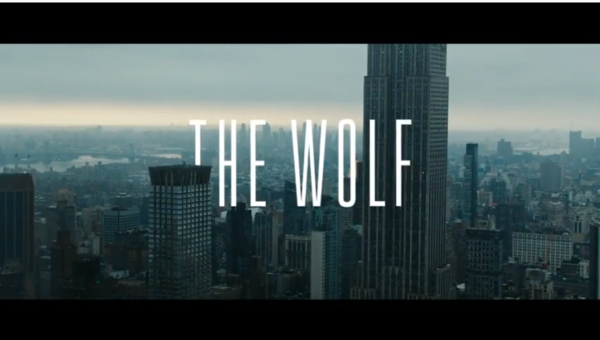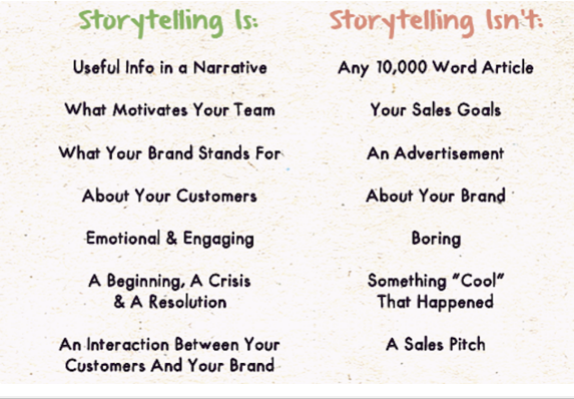Every ardent social media user has heard of Humans of New York (HONY). The photoblog’s founder Brandon Stanton did not set out to sell anything on his blog, yet he has over eighteen million Facebook likes.
The blog is now a decade old and is a testimony of the power of storytelling. The blog’s stellar storytelling techniques turned brought Brandon face to face with Barack Obama in his Oval Office interview in 2015.
The photographer has won many accolades and business opportunities due to his ability to convey minute and intimate details of the lives of the strangers that he meets. It is an art that aids a powerful connection with his online fans.
Brandon, however, says the first picture that he posted on Facebook did not receive a single like. He, however, loved the images that he took, so kept posting them. His tipping point he says, came by when he began to tell the story behind the images of everyday people.
What is Storytelling?
Professional marketing speaker, Bryan Eisenberg, says that facts often tell, but stories sell. Why?
Everyone loves a good story. Storytelling is a vital part of content marketing, which connects brands with their customers, building loyalty.
It meshes narrative and facts into easy to ingest communication with an audience. Businesses can use improvised or factual stories to bring out their core message. Data shows that 55% of consumers will buy from a brand that has a story that they love and one that they can connect to.
Of late, savvy B2B marketers have ventured into the storytelling space with brand content and marketing strategies that create attachments with their customers. Storytelling is however different from traditional advertising.
It does not overtly encourage purchases as other sales and marketing strategies do. Businesses use improvised or factual stories to bring out their core message. Below are the reasons why storytelling is crucial for your business.
Business Development
1993, Hewlett Packard ( HP) printer ad talks about the new HP 3000 printer as having a “superior PA-RISC design that requires fewer components than other computers”. Yawn! This ad formula might have been acceptable in the 90s but boring ads and a boring brand in the age of social media is a sure path to social media oblivion.
In 2017, HP needed to drive its sales of secure printers via the use of online video content and creative use of customer insights. The results? The Wolf series of ads. In their third take, Christian Slater of Mr. Robot begins the six minutes twenty seconds story by stating that sheep only realize that a wolf is in their midst when it’s too late.
The audience is quickly caught up in the narrative whose introduction ends with curiosity creating words such “become dinner” and “time to eat”. “The Wolf” by HP perfectly targets a business’s chief security officer, cautioning him that should he not protect his sheep with an HP printer, he could lose his job.
The embodiment of the power of B2B storytelling, the brand’s cyber warfare, technology, and the espionage-laden film effectively highlights other HP products by highlighting the everyday vulnerabilities of non-HP printers.
Every new business idea has a story that backs its existence. This narrative can provide a context that helps stakeholders and customers to understand it. If your idea is solving a challenge you can share about the problem and make the story relatable to your audience that HP has done with “The Wolf” series.
This process will help the audience trust your ‘human’ nature. It will also infuse your approach with trust. This trust goes a long way in building a brand and since stories are sticky, it will keep the brand in the customer’s memory for a long time.
Brings a Competitive Advantage
Every day, marketers join online platforms to state logic and bulletproof facts that prove that they have the best services or products. Their logical and perfectly constructed proposals often fall on deaf ears because, as negotiators say, decision making is not logical but emotional.
Old adverts used a sensible, professional approach to speak to the customer. Today, you cannot get through the clutter that is on the internet with conventional communication. Ads have bombarded customer sentiments to death.
Consequently, they will not pay attention to ‘professional’ sales ads not only because your potential client views over 6000 to 10000 of this type of content daily, but also because they no longer have faith in traditional modes of advertising.
Since every decision has a pro and con, people use emotion to make their final choice, as per research done by Antonio Damasio, a neuroscientist. Storytelling can build an emotional attachment to a brand, service, or products, an attribute that will give any business a competitive edge and increase its ROI.
As an illustration, the success of “The Wolf” brought about unprecedented brand awareness for HP garnering over 45,000 video viewing hours on YouTube in the first two weeks of its release. By the first month, the video had over 12.5 million views, with over 118 million PR impressions.
Globally, the ad has earned over 66 prime editorial placements on online magazines CNET, Gizmodo, VentureBeat, Adage, Fast Company, and PC Magazine. These are top spots where you are more likely to interact with top business security personnel.
Enhances Employee Engagement and Efficiency
Some of the best business stories told are not just entertaining but educational as well. This is the reason why storytelling not only works for sales but employee engagement as well. A majority of employees are highly disengaged from their work, a challenge that can be addressed by this crucial aspect of communication.
Corporate stories can cultivate a great company culture by sharing your business’s values, struggles, aims, and history. These narratives are also perfect for communicating other work-related subjects such as work training scenarios or management and employee management materials.
Some of the benefits of business stories for employees are;
- Stories are very flexible. You can have a single objective but personalize its content to address every individual
- The corporate story’s knowledge is more believable since the receiver will apply their unique experience when interpreting it
- The business based narrative appeals to the emotions of its listeners. It fosters a feeling of business narrative ownership amongst the employees.
- When workers feel at home with your brand’s practices and values, they will rise up to become champions of its causes. Such an employee is an asset that enhances the reputation of a business.
Humanizes a Brand
Stories make us human and they can also humanize a brand. The most successful businesses out there have a thoughtful and deep story that inspires their loyal customers. The sentimental value of a business’s story also imbues a company with meaning and a sense of purpose.
The reluctant superhero story often begins with a super farm boy. In business, some of the most rewarding businesses have a garage in their origin story. We are talking about Apple, Amazon, and Lamborghini.
All these billion-dollar operations had garages for incubators. They were imagined by dedicated and brilliant dreamers who went through many challenges to see their dream into actualizations. Much of the affection and loyalty from fans stems from the human nature that loves stories of the underdog that overcomes extreme odds and makes it.
The garage feature in the case of Apple gives the business a priceless human element of two young broke men toiling away to success. Unfortunately, many businesses often neglect their product, services, or brand origin story.
This oversight often comes with a great price. Your prospective clients want to deal with people, not an unreachable corporate entity. Earn their loyalty by telling them your story. Below are some ways that you can use storytelling to humanize your brand;
- Show your customers your face. Tell them about your mission and the steps or challenges that inspired it. Avoid generic business personas and highlight the issues that inspire you, your obstacles, and the successes.
- Throw a light on the values that you stand for. If you are for instance a part of a social movement for change, rope your audience in with a story. When customers understand your beliefs, they will be more loyal.
- When writing down a story, research on the impact that your brand has on your customers. Consult your employees too and have diverse views as fodder when creating a narrative to revamp your image.
- Create an authentic narrative and use casual language forms. Take off the marketing hat to ensure that you have a transparent story. Social media users despise half-truths and can detect them from a mile off.
Use Stories to Transfer your Beliefs and Values to your Audience
Neil Patel says that business stories are like vitamins. They will get into your prospective clients, permeate them, and fight off any objections that they may have against your brand. The core advantage of storytelling is power of persuasion.
The persuasive nature of your corporate story will impart your core beliefs to your customers and increase your conversions. Use a story to communicate a value system and let your loyal fans have an epiphany through it.
Conclusion
Stories can move your audience to action and create purpose. Trigger engagement by feeding them a narrative. Every successful brand today has a robust storytelling initiative because they have noted that this content marketing strategy creates an emotional attachment to a brand. This loyalty, in turn, increases a business’s bottom line. Design and tell better stories for your business today.

